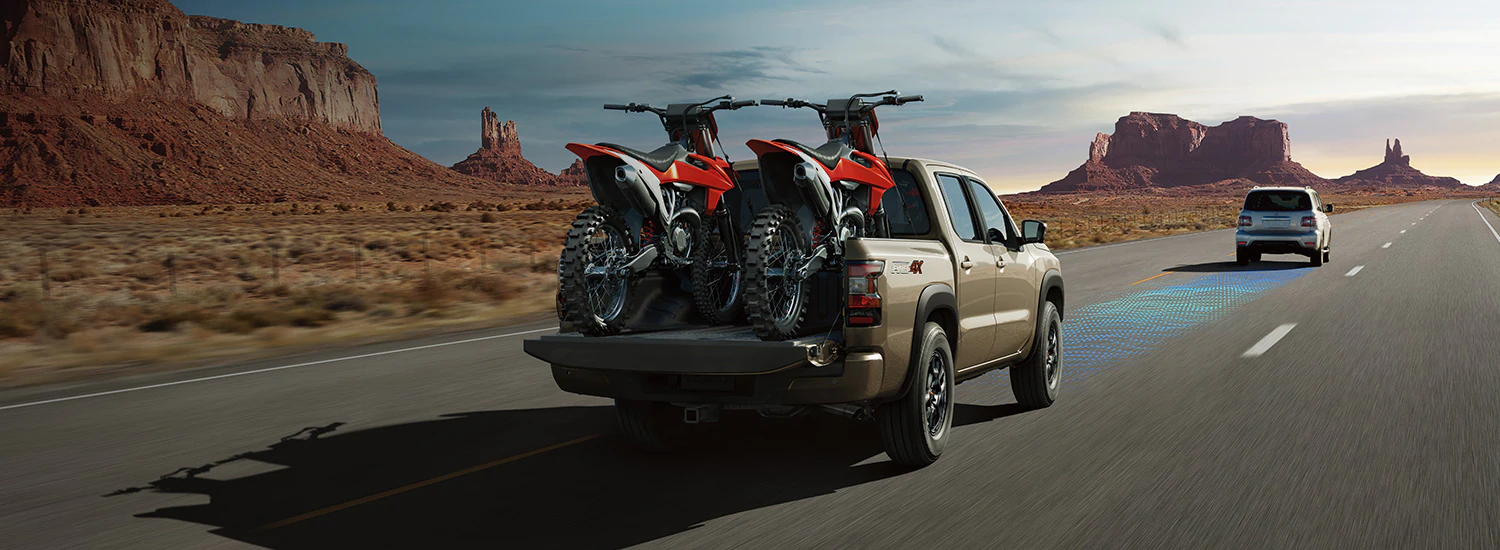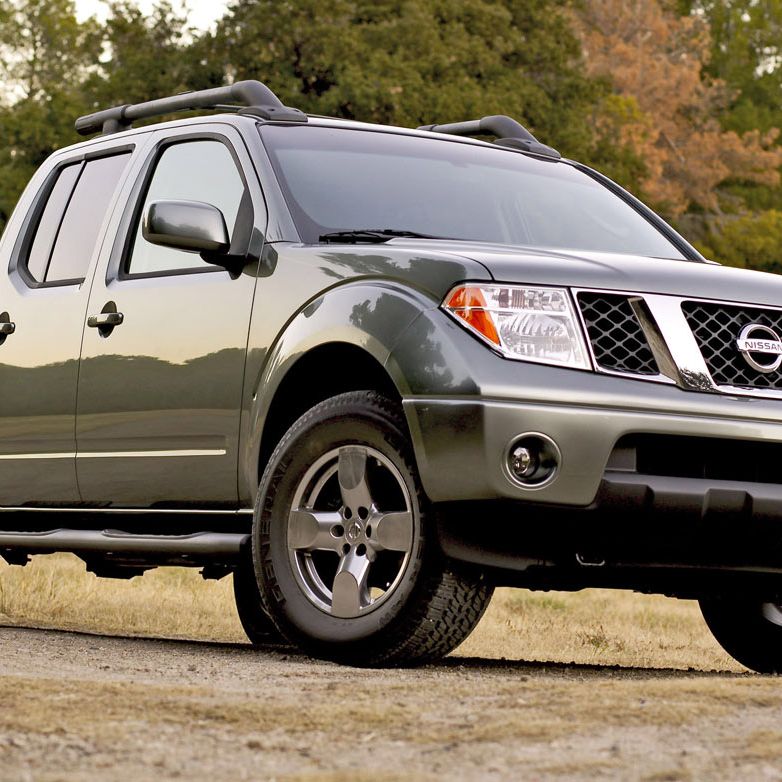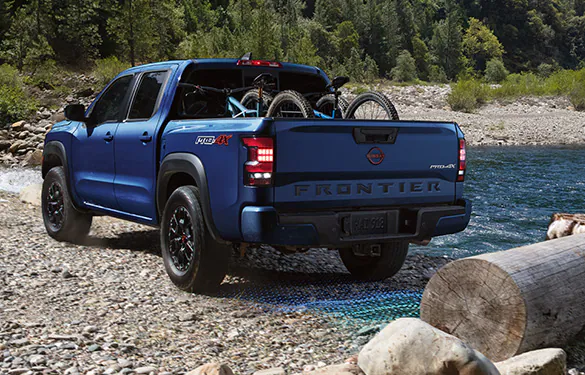Do you drive a Nissan Frontier? Do you want to make sure it’s as safe as possible?
Read on to learn all about airbags, their types, benefits, and safety features – all in one complete guide. With the right information, you’ll be driving with confidence and peace of mind.
The Nissan Frontier is a popular mid-size pickup truck, and many drivers enjoy the durable design and reliable performance. When it comes to advanced safety features and modern convenience, however, the Frontier often falls short. One of the best ways to upgrade your vehicle’s safety is to invest in a set of air bags.
There are several different types of air bags available for Nissan Frontiers; each one offers specific benefits and improved safety features. This guide will cover all aspects of Nissan Frontier air bag installation, including which type is best for your needs and how to ensure it is installed properly.

Brief overview of air bags for Nissan Frontier
Air bags are an important safety feature of the Nissan Frontier, offering increased protection to other passengers in the vehicle in case of a collision. Air bags are inflated with nitrogen gas and deploy instantly to cushion a passenger’s torso and head, mitigating some of the potentially deadly impact of a crash. The Nissan Frontier is equipped with both driver and passenger side air bags, as well as side curtain air bags on either side. In 2017, late-model Nissan Frontiers also began including driver knee airbags.
Airbags are not only beneficial to passengers in the event of a crash, but also offer peace of mind for drivers and other occupants that their loved ones will be kept safe. Sound engineering practices and rigorous testing ensure that all Nissan Frontier’s airbags comply with regulations from both NHTSA (National Highway Traffic Safety Administration) and FMVSS (Federal Motor Vehicle Safety Standards). All components must meet specific criteria before deployment to guarantee maximum safety for all occupants.
Importance of air bags in vehicle safety
Airbags have become increasingly important in vehicle safety, providing improved protection for the occupants of a car, truck or SUV in the event of an accident. They deploy quickly and effectively protect drivers and passengers from serious injury by reducing the occupant’s forward motion. The purpose of air bags is to soften the impact an occupant has on their surroundings during a collision.
Airbags are most effective when combined with seat belts since they help reduce the chances of serious injuries occurring during an accident.
When airbags quickly inflate at crash speeds, they provide an extra layer of cushion between the driver and/or passenger and any hard object like a steering wheel or dashboard. In addition to cushioning occupants from hard surfaces, driver and passenger-side airbags can also help to prevent injuries from side curtain impacts or shattered glass shards from side windows.
In terms of specific types of airbags for Nissan Frontier vehicles, there are frontal airbags for both driver side and passenger side that deploy in front crashes to prevent head-on collisions, as well as knee bolsters (designed to absorb the majority of crash energy) on both sides. Other safety features available include blind spot warnings and crash avoidance systems that help keep drivers aware while on the road – all features aiding toward topnotch vehicle safety.
Benefits of Air Bags for Nissan Frontier
Nissan Frontier vehicles equipped with air bags offer a variety of safety features that are designed to reduce the severity of injuries in the event of a collision. Air bags have proven to be effective in reducing the likelihood of head, neck, and upper body injuries. In addition, they provide extra cushioning and support in case of side-impact crashes.
Air bags are designed to deploy quickly in an accident and slowly deflate afterwards. As a result, they are able to absorb higher levels of impact energy than other vehicle safety features such as seatbelts or crumple zones. They can also provide additional containment for occupants who may be thrown from the vehicle during a collision.
Nissan Frontiers equipped with air bags may also feature advanced sensors that can detect when an occupant is out of position or too close to an air bag during deployment and deactivate them if necessary. This helps ensure your safety by preventing potential injuries caused by rapidly inflating airbags against vulnerable parts of your body such as your head or chest.
Another important benefit offered by air bags is their ability to provide added protection against rollover accidents which often lead to more severe injuries than standard frontal collisions due to their high speed and strong forces generated by tumbling motions. This is especially true when combined with anti-slip mechanisms that can help reduce skidding. Additionally, many Nissan models now come with roll-stabilizing technology that uses motion sensors and dynamic braking systems designed specifically for increased safety during rollover scenarios.
Reducing the risk of injury and fatalities in accidents

Air bags can reduce the risk of injury and fatalities in accidents by positioning the occupants of a vehicle to better absorb the impact of a crash. This is especially beneficial for smaller vehicles, such as Nissan Frontiers, which have limited space for occupant protection. The benefits of airbags in reducing fatalities and injuries are significant, since they are designed to act as supplemental protective restraints.
There are two main types of airbags: frontal airbags which protect the driver and passenger in a collision that occurs at the front-end of the vehicle; and side airbags which offer an additional layer of protection during a side-impact crash. In recent years, Nissan has developed vehicles with advanced emergency brake braking systems that can also trigger side impact airbag deployment in a crash event. Other safety features include rollover protection structures, antilock brake systems, traction control systems (TCS), stability control systems (SCS), pedestrian detection systems and night vision assistance technologies.
In terms of design and materials used, modern car manufacturers have improved the safety standards for their vehicles by using high-performance polymers for structural reinforcement to offer drivers additional resistance against impacts. Nissan Frontier’s interior is designed with several passive safety components; these materials dissipate energy on contact with other objects during an accident (headlining material is often used) as well as reduce intrusion into the cabin space of passengers with airflow cushioning airbag protection further aiding occupants’ safety from impact.
Furthermore, depending on what type or model you purchase, some Nissan Frontiers may come equipped with advanced essential safety features such as blind spot warning technology, lane departure warning system (LDWS) or reverse automated emergency braking system (RAB) amongst others that can help reduce potential risks associated with distracted driving habits when travelling or shifting lanes at high speed on highways or freeways.
Protection for occupants of the vehicle
Airbags offer a significant level of protection for passengers in a vehicle. They operate by deploying when a crash occurs, providing cushioning between the occupants of the vehicle and the interior of the car. Although airbags work to provide protection in most circumstances, they must be used in conjunction with other safety measures to ensure maximum protection.
When an airbag deploys, it typically fills up with compressed gas that causes it to expand rapidly, providing a cushion between an occupant and the vehicle’s interior. Many Nissan Frontiers include air bags located in the front and sides for added protection for occupants of both rows of seating. In most cases, these are supplemental restraint systems (SRS), which combine not only side-impact and conventional front-impact air bags but also seat belt pretensioners that automatically tighten seat belts in the event of an accident or impact.
The specific types of protection available will depend on how many air bags your Nissan Frontier has, as well as whether or not they are SRS bags. For example, some have front driver and passenger side-impact air bags located along each side of the interior on either side of the driver’s cushion; these provide more comprehensive coverage than traditional frontal alone frontal airbags would offer. Additionally, many Frontier models have seat belt pretensioners; these help minimize occupant displacement during a crash by automatically tightening both shoulder straps upon impact for several seconds before beginning to relax automatically once again after deployment.
Decreasing the force of impact during a collision
In order to decrease the force of impact during a collision, Nissan implemented air bags and other features such as pretensioners in the Frontier. In doing so, the company hopes to increase automobile safety for its drivers and passengers. Additionally, the Frontier’s air bags are designed to provide additional protection for occupants by accommodating different seating positions and providing cushioning during an accident.
Air bags are usually made of ballistic nylon or tear-resistant polyester fabric, which helps contain the inflated air bag and prevents it from being forced out of its cover in a collision. The interior of an air bag is pre-filled with gas to create a cushion and limit forward movement when a collision occurs. Airbags are also designed with pressure-sensitive sensors that can detect sudden changes in speed when an accident occurs. When these sensors detect an impact, a charge will be sent to an inflator mounted on the steering wheel or dashboard that emits compressed gas into the air bag. The gas causes it to quickly inflate and protect drivers from potential injuries caused by contact with parts inside or outside of their vehicle such as steering wheels, dashboards, seatbelts or door frames.
Furthermore, new safety systems pair airbags to form dual-stage airbag technology built into some models of Nissan vehicles such as Frontier that has two levels of deployment depending on how severe the crash is. This deployment system relies on data collected from crash sensors placed throughout your car’s frame to measure speed reduction rate due to impact — if data shows a slower speed reduction rate due to impact then only one layer will deploy whereas if data show faster speed reduction rate due to impacts, both layers will be activated allowing the maximum amount of protection possible at any given time during a collision event. Additionally, most Nissan vehicles have side curtain airbags that deploy between you & your car’s window glass protecting you from flying debris during collisions & providing additional cushioning upon each head contact with various parts inside/outside your vehicle respectively!
Safety Features of Air Bags for Nissan Frontier
Airbags are designed to provide additional safety features for Nissan Frontiers. They offer protection to occupants, whether they be the driver or passengers, in case of a crash or collision. The major safety feature that airbags provide is head and neck restraint. This is achieved by activating both driver and passenger side airbags in conjunction with seatbelt pretensioners which restrain the occupants in a controlled fashion; this reduces the potential for serious head and neck injuries during a crash.
Another safety feature that Nissan Frontiers offer is Sensing and Diagnostic Module (SDM). This device monitors the activation of several components within the car including braking, steering and suspension systems, as well as engaging multiple vehicle body accessories such as headlights, windshield wipers, etc. If it senses any malfunctioning component or component failure during operation of the car, it will warn the driver by using an audible sound or light indicator located in either the dashboard or instrument panel.
Finally, Nissan Frontiers also offers occupant restraint system (ORS) which uses sensors to detect a certain number of passengers inside the car; if needed it can activate additional air bags depending on how many people are inside at one time. All these features ensure increased protection to those onboard while providing enough cushioning against hard impacts to minimize most injuries occurring during crashes or collisions.
Sensor technology

Sensor technology is a key component of airbag systems. These devices detect how quickly and in which direction a vehicle is accelerating and decelerating, sending a signal to the airbags to deploy when appropriate. The sensor technology utilized by Nissan Frontier includes several independent control units that work together to monitor various aspects of the environment around the vehicle.
The accelerometer in the system detects the acceleration, speed, and direction of the vehicle, allowing it to determine when an impact has occurred. The other sensors evaluate brake conditions, steering angle, yaw angle (the angle at which the front end of the vehicle is pointed relative to its current direction), and road surface characteristics. All of this data is sent to an Electronic Control Unit (ECU), which determines if an impact has occurred and triggers deployment of the airbags only when necessary.
Nissan’s advanced sensor technology utilizes innovative features like advanced gyroscopes that monitor three-dimensional motion in order to more accurately detect possible collisions from multiple directions. The ECU also takes into account vehicle speed, body position during collision detection as well as multiple collision points in order to ensure proper triggering of airbag deployment at just the right time. If an accident is particularly severe or prolonged, supplemental sensors also trigger side curtain bags or seat belt pretensioners in order to provide extra protection for passengers against secondary impacts resulting from a crash situation.
Deployment speed and force
An airbag’s deployment speed and force by an accident must be optimal for the driver or passenger’s safety. An airbag deploys with a specific pattern in which it accelerates from the steering wheel, dashboard or side panel to the occupant during a crash. This process begins when sensors detect an impact, sending a signal to deploy the airbag.
The deployment rate of an airbag is typically designed to match the speed of a crash, meaning that it fills with gas quickly in fast collisions and more slowly in slower crashes.
Airbags must inflate with enough force to protect occupants but not so much that it causes injury upon impact. This is accomplished by creating an internal pressure inside the airbag prior to inflation that helps slow deflation once contact has been made with passengers. An airbag can relieve up to 20-30g of under-body force when deployed correctly and manufacturers typically design their products around 150 mph deployment speeds—about 70 mph faster than most cars can go on public roads.
Seat belt integration
The Nissan Frontier comes equipped with a seat belt integration design feature that allows passengers to be more secure when using their air bags. This feature ensures the seatbelt is tight before the air bags deploy, preventing the passenger from being flung forward and potentially injuring themselves.
The seat belt integration also works in combination with an advanced sensing system that continually monitors the cabin space for occupants, deploying the appropriate number of air bags during a crash. In addition to increasing security, this system helps reduce over-inflation of airbags, a common problem that can lead to further injury or death.
The Nissan Frontier also features different occupant seating positions within the vehicle which can help reduce potential injuries from airbag deployment. A designated passenger side seating position is at a greater distance away from the dashboard and steering wheel than other seating positions in order to give them additional protection in case of an accident.
Electronic stability control

Electronic stability control (ESC) is a technical term for an automotive safety system that helps improve vehicle stability and cornering performance on wet and slippery surfaces. Through its use of multiple sensors, the system monitors a variety of data points including wheel speed, steering angle, yaw rate, and lateral acceleration. In the event of a possible event such as wheel oversteer or understeer the system can apply independent braking to each wheel in order to regain control of the vehicle. The advantages of ESC include improved vehicle handling, increased driving confidence, and better safety performance. Furthermore, it can also help reduce rollovers in extreme cornering scenarios.
Nissan Frontier models are equipped with ESC as an available feature on various trim levels. This feature is designed to help keep you safe while driving in wet or slippery conditions by providing additional control in situations beyond your immediate control. It works by detecting when you’re attempting to maneuver beyond what your tires are capable of allowing and applying finely adjusted braking forces to help keep you on track without loss of speed or directional stability. All Nissans equipped with ESC also come with special safety features including tire-pressure monitoring systems, area impact sensors located throughout the passenger cabin and chassis structure, active head restraints at each seating position, and dynamic brake assist built into select trims for extra stopping power during high-risk situations.
Conclusion
The addition of air bags to your Nissan Frontier offers many safety benefits. However, as with any safety features in a vehicle, proper installation and proper use are important components for optimal performance. Following your vehicle’s owner’s manual for proper setup and use of the air bags will ensure that you are using them to their fullest potential.
When choosing the type and number of air bags to install in your Nissan Frontier, take into account such factors as the size of the vehicle, whether or not it is used for heavier loads and the age and size of passenger occupants in order to make sure that you have selected a set that meets the needs of specific situations. Be sure to consult with a certified auto mechanic or car parts professional before making any decisions regarding adding an air bag system to your Frontier.
With proper installation, it will provide an extra layer of protection should an accident occur while on the road.
FAQ’s
Does Nissan Frontier have side airbags?
It depends on the model and year. Some Nissan Frontier models have side airbags, while others do not.
Why are air bags used in the cars for safety?
Airbags are used in cars for safety because they can help protect occupants in the event of a collision by reducing the risk of serious injury or death.
What are two types of side airbags that protect the head?
Two types of side airbags that protect the head are curtain airbags and torso airbags.
What is airbag components and function?
Airbag components include a sensor, an inflator, and an airbag cushion. The function of an airbag is to inflate rapidly in the event of a collision to help protect occupants from injury.
What is the best type of airbag?
There is no one best type of airbag, as different types of airbags are designed to protect occupants in different ways depending on the type of collision.
What are the three types of air bags?
The three types of airbags are front airbags, side airbags, and curtain airbags.
What are the different types of side airbags?
Different types of side airbags include torso airbags, curtain airbags, and combination airbags that protect both the head and torso.
How much safer are side airbags?
Side airbags can significantly reduce the risk of injury or death in a side-impact collision, making them an important safety feature in modern cars.
Are rear side airbags safe?
Rear side airbags can be safe, but their effectiveness depends on the specific design and placement of the airbags in the vehicle.
What is the disadvantage of airbags?
One disadvantage of airbags is that they can cause injury if they deploy too forcefully or if the occupant is not properly positioned in the vehicle. Additionally, airbags can be expensive to repair or replace after a collision.
See Also:
Best spark plugs for nissan frontier 2023
Best shocks for nissan frontier 2023
Best seat covers for nissan frontier 2023
Best tuner for nissan frontier 2023
Best running boards for nissan frontier 2023

